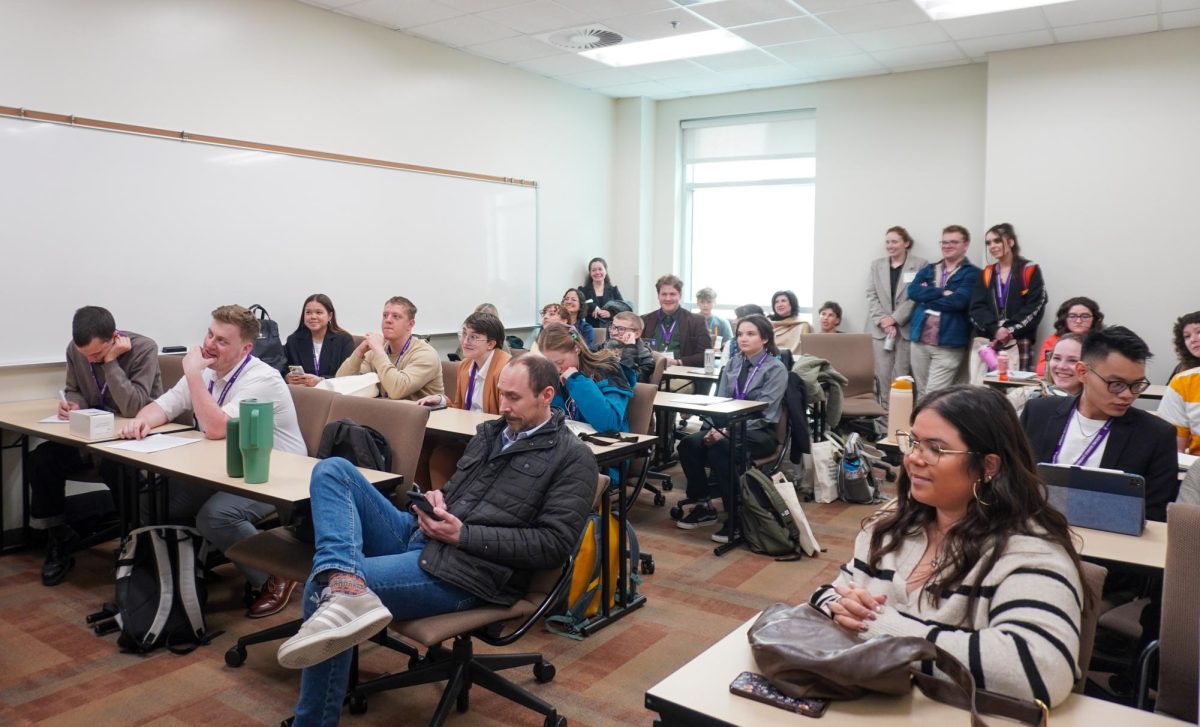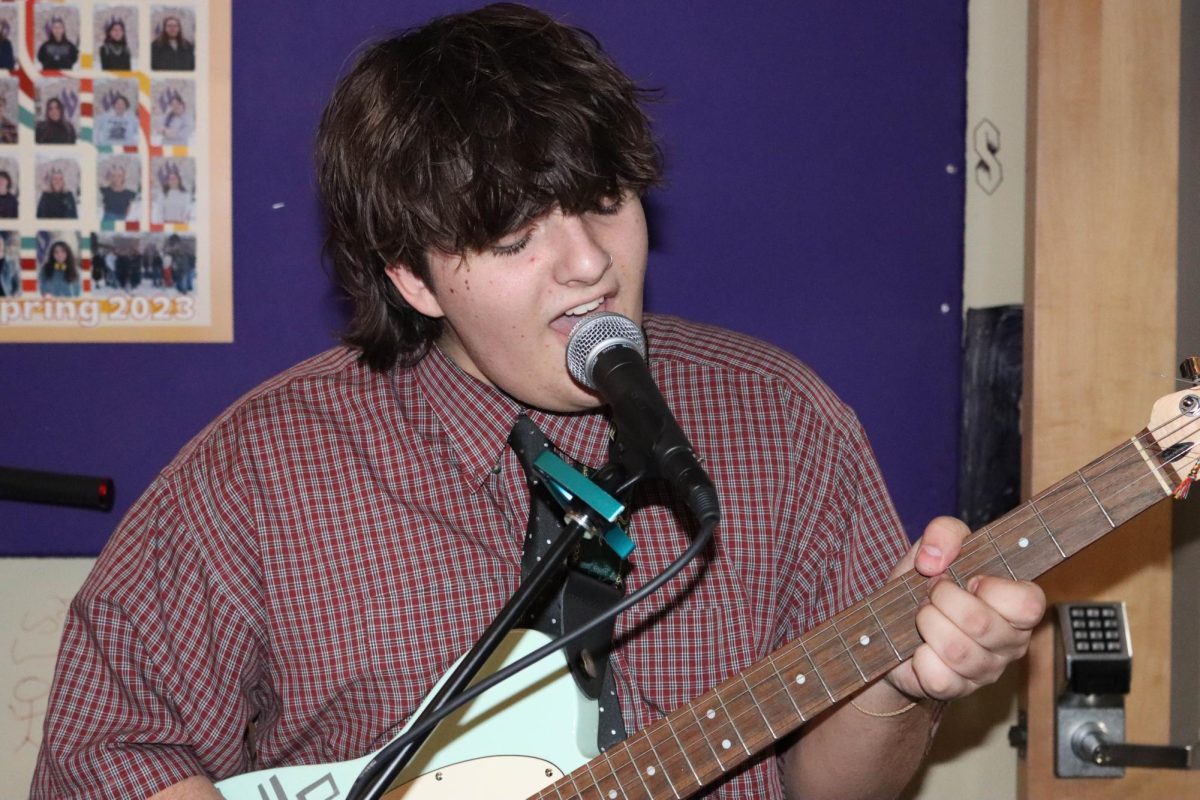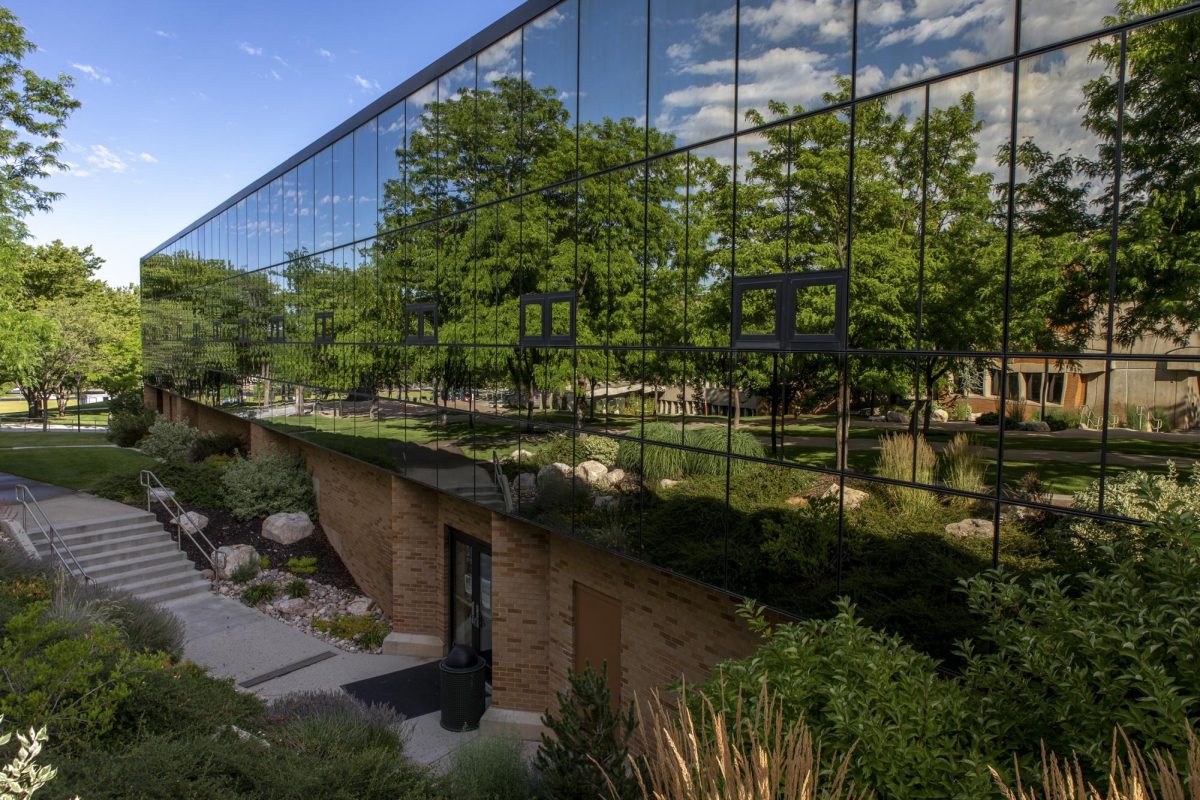
In just 48 hours, interior design and design engineering technology students at Weber State University created plans for a cultural center for the Timbisha Shoshone Native American tribe.
For the past four years, the two departments have combined to participate in an annual interdisciplinary charrette, or design competition. This year, teams were given their design problem on Sept. 11 and had two days to work.
Kristen Arnold, the interior design department program coordinator, said this project provides a real-life example of working in the students’ prospective industries.
“In the design-build industry, architects, designers, electricians, engineers and more all come together on a project,”Arnold said. “It’s really common to have all different disciplines coming together to solve a problem quickly, so we just feel like this prepares them for that.”
Jeremy Farner, the design engineering technology assistant professor, said the team aspect is a challenge that can provide beneficial experience.
“These students didn’t know each other beforehand, but design professionals can come from different angles and have viable solutions that they may have never thought of before,” Farner said.
Farner also said that students of the interior design department and the design engineering technology department complement one another.
“My students are really comfortable with design structurally and architecturally, and interior design students are comfortable with the interiors and the architectural design. So bringing them together and having them mesh is great,” Farner said.
The 16 participating teams were required to create a presentation board and a short video. A panel of judges then evaluated the projects and chose the top three teams.
Judging criteria included poster quality, floor plans, infusion of regional and cultural perspectives and the ability to convey design concepts creatively.
The first place winning team was comprised of interior design students Bri Conrad, Aarika Rasekhi and Tyler Page, and design engineering technology student Michael Steele.
“I really enjoyed our team,” Conrad said. “I think that we all worked really well together. We all kind of capitalized on our strengths and brought those to the table, which turned out to create a beautiful design.”
The team said much of their design was inspired by a circular shape, including a round building which would allow a continuous walking path inside.
“When we gathered together, we started thinking of the layout first, and one of the first concepts we came up with was the circle idea,” Page said.
Steele said their biggest challenge was the time limit, but the team was still able to turn in their project just in time for the 4 p.m. deadline.
“That will happen in the real world,” Rasekhi said. “It was kind of cool to experience that, where you have deadlines you have to meet.”
Each member of the winning team received a $200 scholarship and a bag full of designing tools.
Some of the best elements of the students’ designs will be used in the actual construction of the Timbisha Shoshone cultural center in California’s Death Valley National Park.
“I think that we capitalized on every single aspect that they asked for,” Conrad said. “We included sustainability, we had a wind tower, we had solar panels. We related everything back to the tribe and to the environment and I think that also made our design holistic.”













